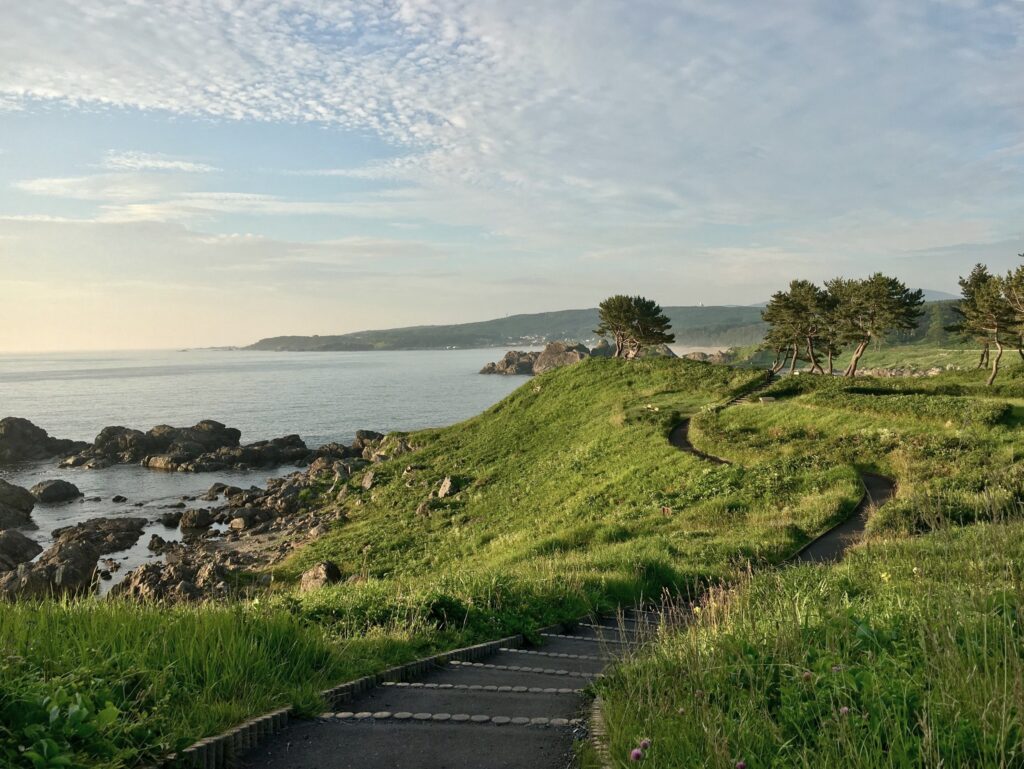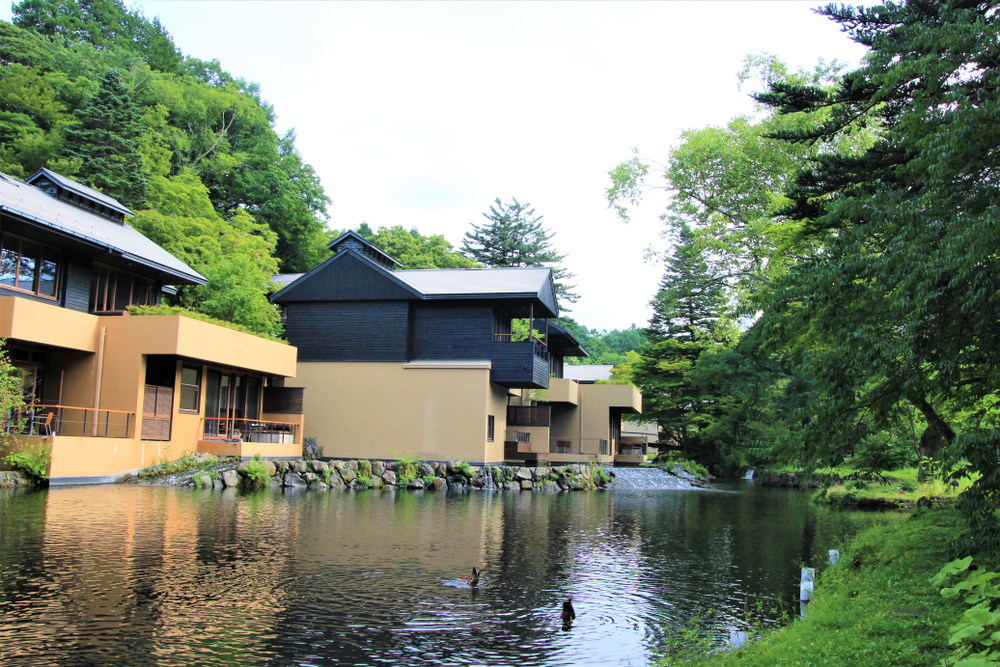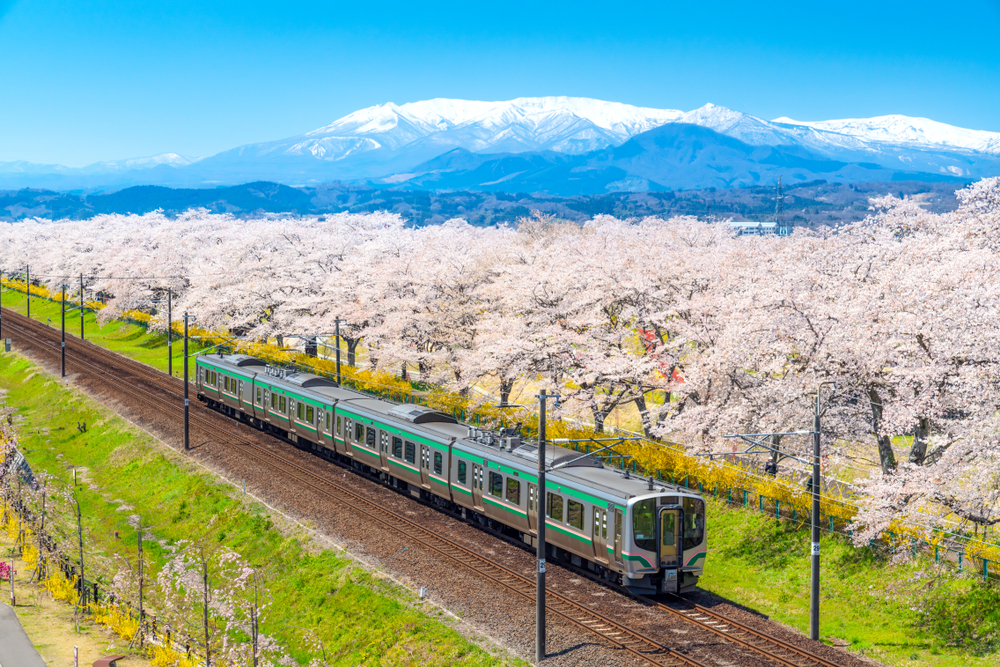There is a new travel trend rising as people are more conscious on how their activities and the things they buy affect the environment. The desire to travel more responsibly and minimise our environmental impact as well as give back to local communities has been gradually gathering pace for years.
Responsible tourism allows travellers to immerse in the destination whilst uncovering local experiences with a justification of the air miles taken to get there. In Japan, where cleanliness is taken seriously, there are ways to travel responsibly.
Michinoku Coastal Trail

Running along the coast of the Tohoku region is the Michinoku Coastal Trail, this trail offers a rocky shoreline, numerous bays, cliffs and coves stretching over 1,000 kilometres. As a result of the 2011 earthquake, tsunami disaster tourism has been and still is vital to the recovery of the area. The region was devastated by the impact and after effect of the tsunami and currently only gets visits from 2-3% of Japan’s international travellers despite it being one of the biggest areas in Japan. The local community has worked hard to rebuild the area using tourism to help generate the local economy.
Visitors can hike the Michinoku Trail and stay in guesthouses along the way, this allows for visitors to experience local life for themselves, and see what’s so special about the Tohoku region. Visitors can walk the length of or part of the Michinoku Coastal Trail with Walk Japan, Walk Japan is a company that prides itself on its efforts to incorporate local communities into its walking tours. It is committed to employing local staff, they use local family-run accommodations, local taxi and bus firms, restaurants and more.
Hoshinoya Karuizawa in Nagano, Japan

Located in the Nagano prefecture, along the Three-Star Road in the Japan Alps, stands the serene eco-friendly mountainside Hoshinoya Karuizawa resort. This gorgeous resort is just a short drive from Tokyo blending into rural surrounding landscapes. The resort gets its name from the use of hydroelectric systems created from waters that trickle down Mount Asama to the Yukawa River.
In line with using natural waters for power, the resort is home to natural hot springs that are powered by geothermal energy from Mount Asama. The system in place is called ‘Energy In My Yard’ providing 70% of the resort’s energies including the added luxury of underfloor heating. Enjoy the surrounding wonders of this resort guilt-free and view the Shiraito Falls, Karuizawa Wild Bird Sanctuary and Tombo-no-yu baths. Stroll around the resort’s private idyllic gardens taking in the peaceful and spiritual atmosphere.
Zero-waste village – Kamikatsu, Shikoku
Japanese town Kamikatsu is located in Tokushima prefecture in the Setouchi region. In 2003 the town took to a Zero Waste Policy, the first in Japan to do so, and aimed to eliminate the use of incinerators or landfills. Residents of this town have spent over two decades reusing, recycling and reducing. The town has no trash collection system so residents transport the household waste themselves to a local facility, where there are over 45 separate categories for their waste segregation.
Back in 2016, the town managed to recycle 81% of all their refuse and with their sights set on 100% ‘Zero Waste’ by the end of 2020. In 2020, the town opened the ‘Why?’ facility to encourage people to visit and learn about the town’s ground-breaking sustainability initiative. The new facility includes hotel rooms for overnight guests and is in the shape of a question mark. The town also boasts a designer bar made entirely from recycled refuse.
Travelling by train around Japan

Japan is renowned for its excellent train transportation being exceptionally clean, quick and easy to use. Cut down on carbon footprint and take an unforgettable trip around Japan. Trains stop at both major cities and smaller villages allowing for visitors to get off-the-beaten-track and to discover many of the hidden gems that the country has to offer.
Many areas in Japan have their own special, scenic railways on which visitors can take in the natural beauty and essence of the region. Travel to the lesser-known areas of the Tohoku region via the Gono Line and stop off in Hachinohe City where the Kabushima Shrine stands. From here visitors can get the train down to Tokyo and explore the capital before venturing from Shibuya to the Chubu region where visitors can explore the Three-Star Road area. From Shibuya the Three-star route will travel to Matsumoto, Takayama in Gifu Prefecture, Shirakawa-go, Gokayama and end up in Kanazawa, Ishikawa Prefecture.
This is an unforgettable area to explore, offering plenty of charming places that showcase a real Japan along with World Heritage sites and National Treasures such as the Kenrokuen Garden, Ishikawa. From here visitors can continue all the way down to west Japan to Kyushu travelling from Kanazawa to Fukuoka. Here, visitors can purchase JR Kyushu rail pass, this area pass covers travel on the Kyushu shinkansen between Hakata, in Fukuoka, and Kagoshima, via Kumamoto, as well as limited express trains around the island, including routes to Nagasaki and the onsen towns of Beppu, Yufuin and Ibusuki.


Comments are closed.